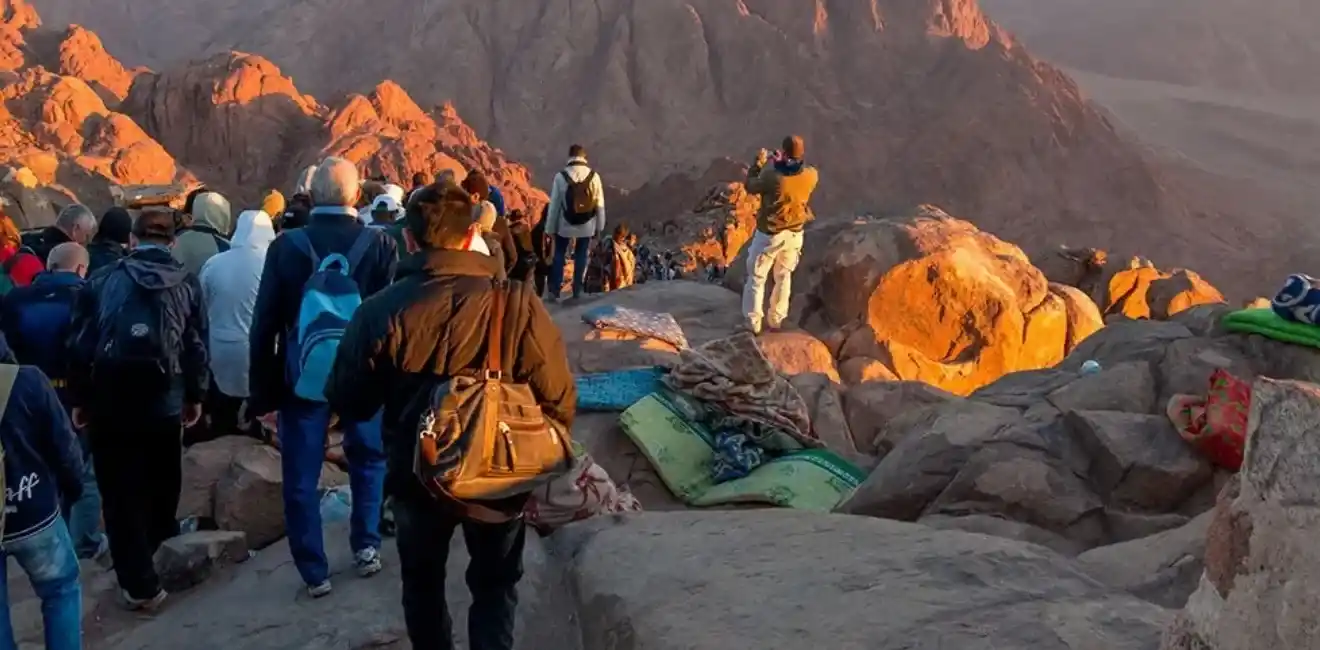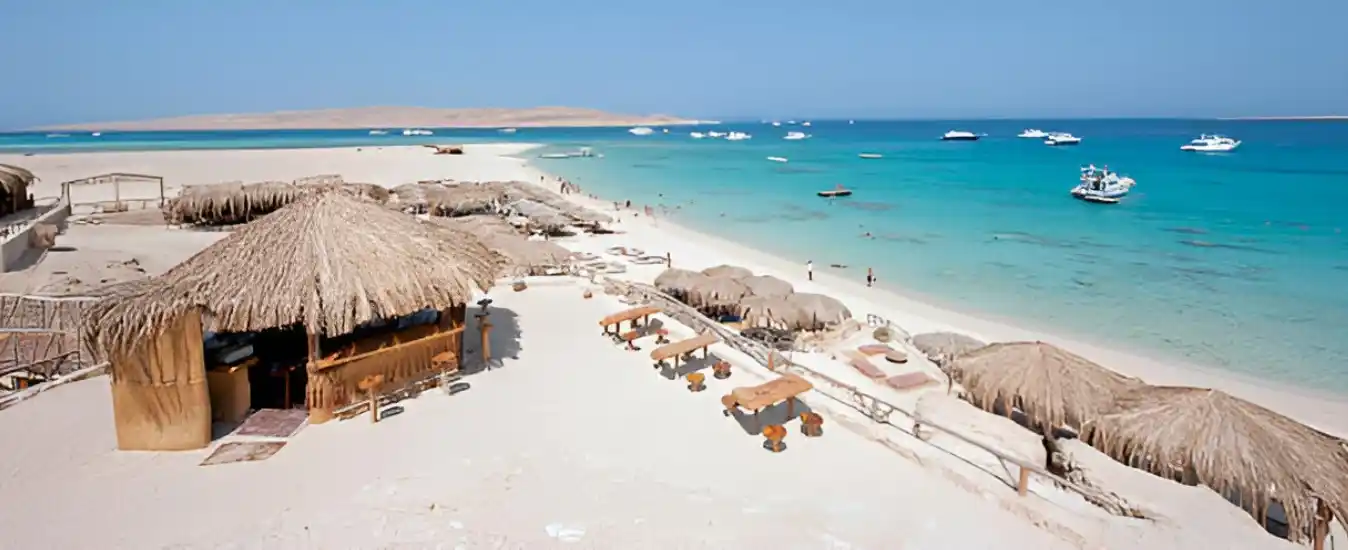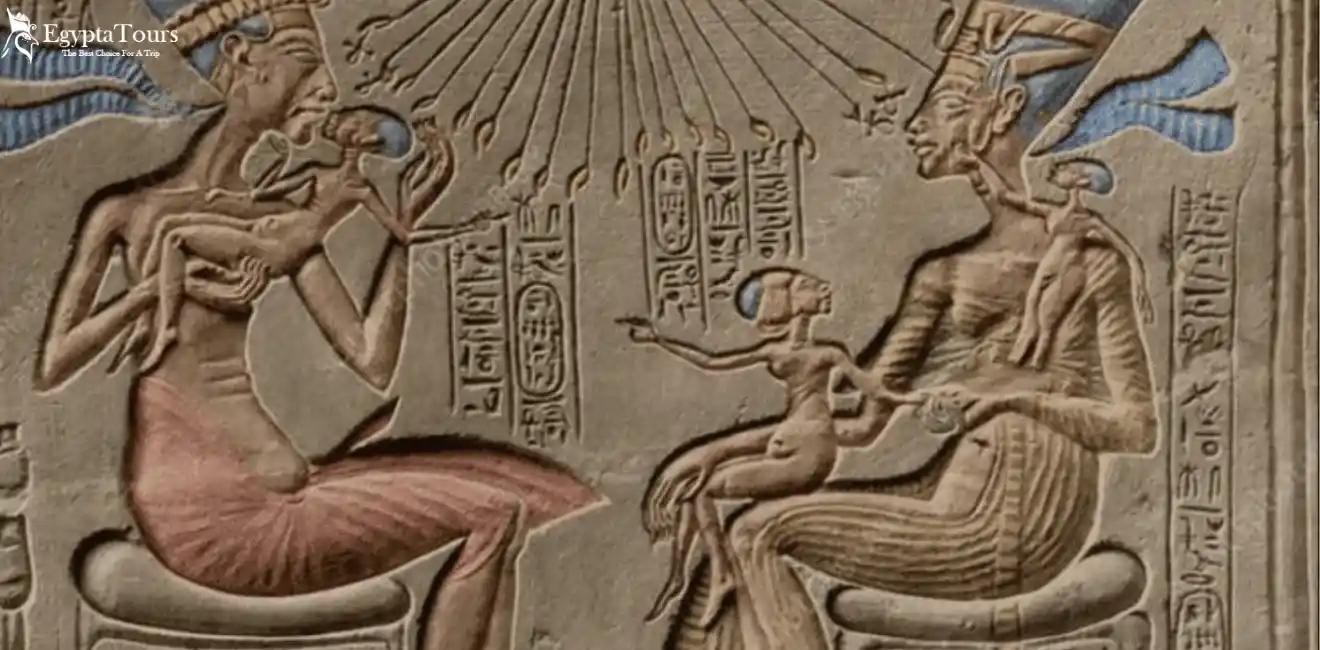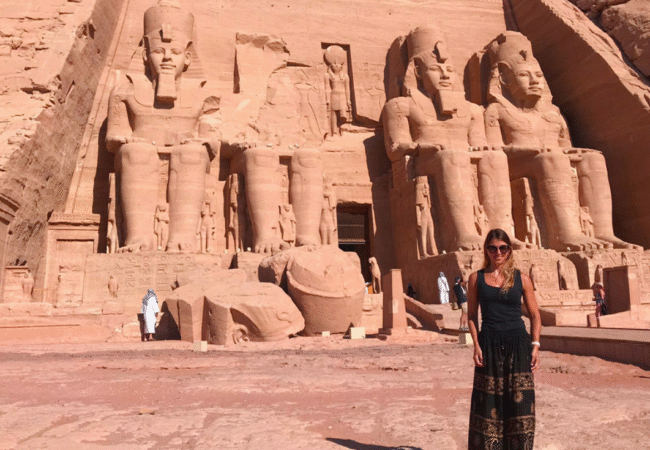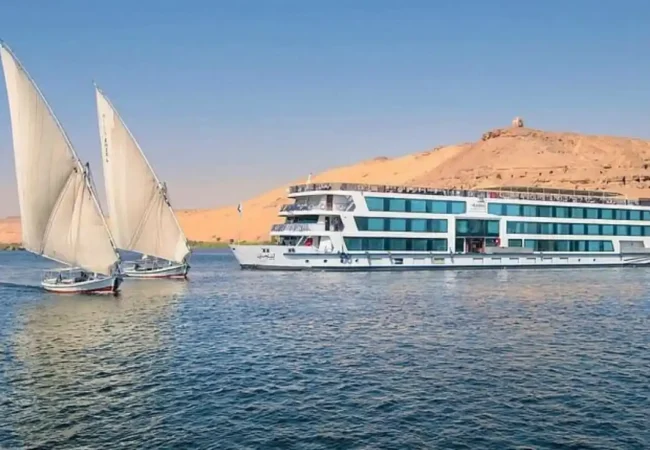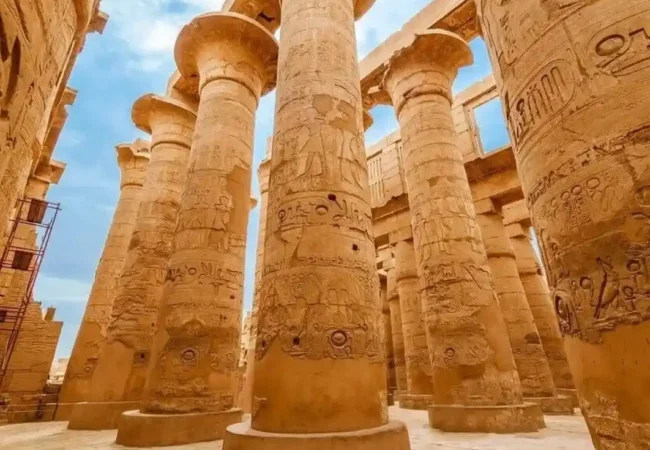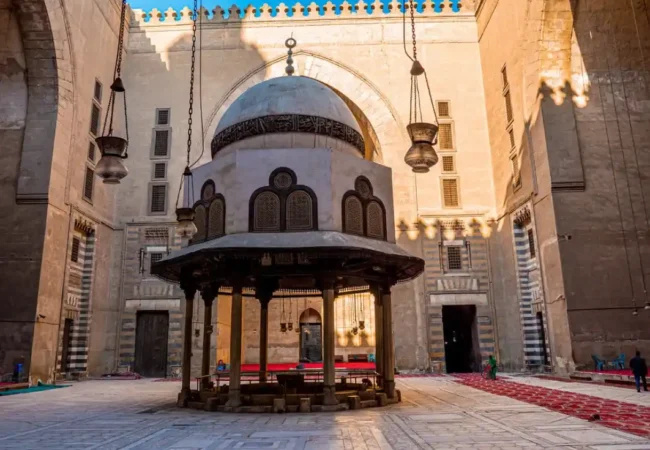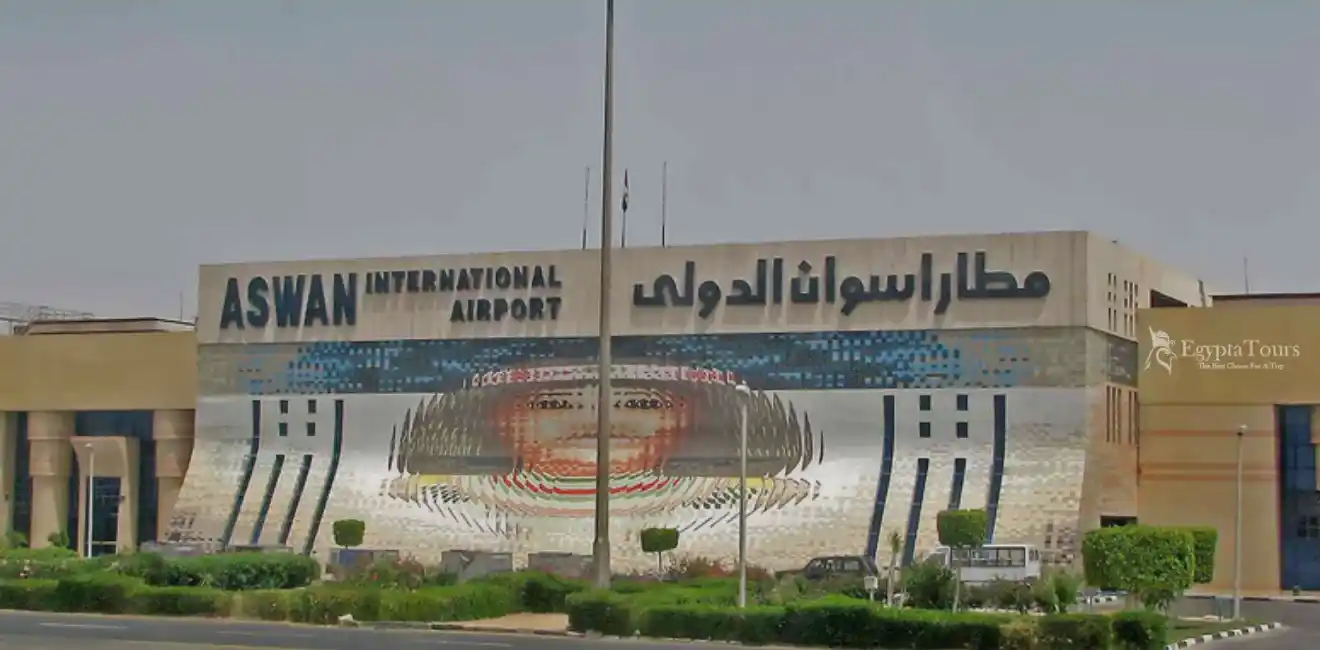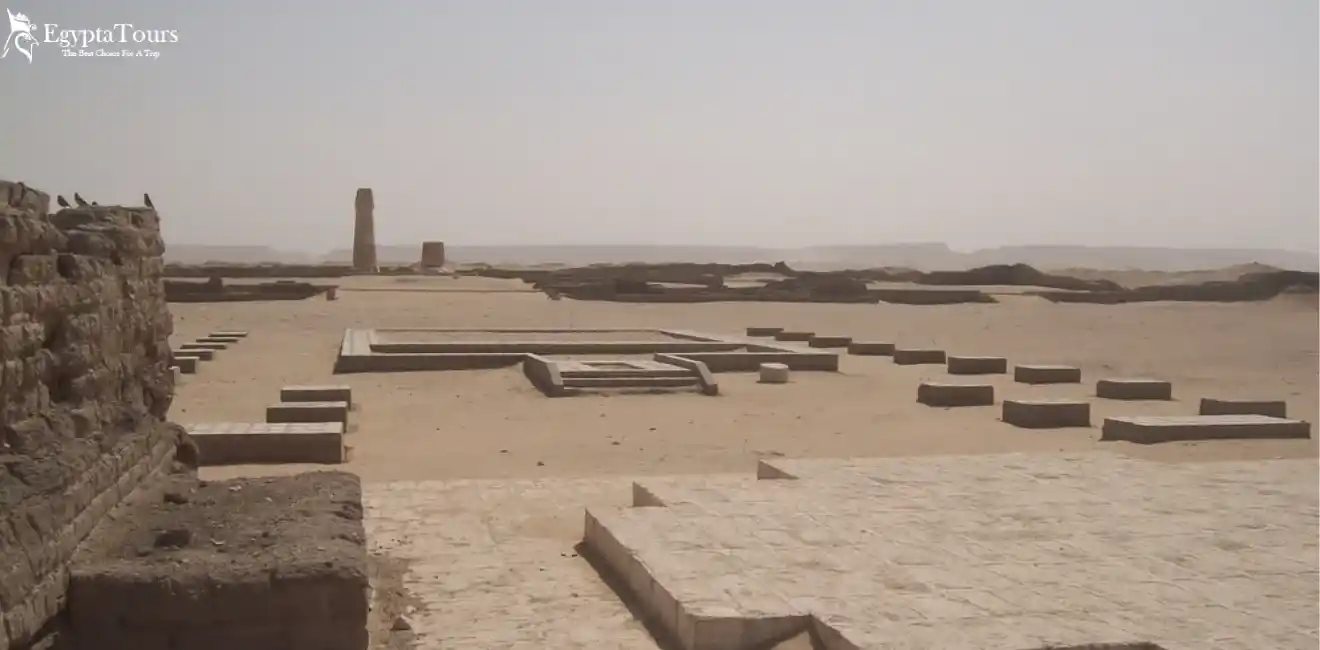
Tell El Amarna
Tell El Amarna is an archaeological city that is distinguished by a great deal of excitement and mystery in ancient Egyptian history. It was the dream city of Akhenaten, who managed to break religious traditions and declared his worship of Aten. But how was it founded, and what was Queen Nefertiti’s role in it? We will learn about all this and more in the following lines.
The Founding of Tell El Amarna by Akhenaten and Its Historical Importance
In the 14th century BC, Akhenaten built a new city and named it Akhetaten, which is now called Tell El Amarna. This sparked a major revolution that affected the foundations of the ancient Egyptian state. He built it to be the capital of Aten, thereby violating Egyptian traditions and denying the worship of Amun.
He chose its location with great care and precision to be far from the centers of power and the priesthood located in the city of Luxor today. It contained government administrations, temples, palaces, and houses, making it a fully integrated system.
As for the importance of this city, it is represented by the following:
- The first experiment in religious monotheism: Akhenaten abolished the worship of the traditional Egyptian gods and worshipped Aten, who is represented by the sun disk.
- Unprecedented artistic development: This city was distinguished by an artistic style known as the Amarna art, where depictions of people were realistic.
- Unique urban planning: The city’s infrastructure was built in an organized manner, which reflects the advanced urban planning of this capital.
- A turning point in royal and religious thought: Akhenaten described the king’s role as that of an intermediary between the god Aten and the people, and he challenged the authority of the priests.
The Homes of the Ruler and Nobles in Tell El Amarna
The construction of Tell El Amarna reflects engineering magnificence, as it presented an amazing model for residential planning. Although it did not last for a long time, archaeological excavations have been able to reveal architectural details that prove the extent of the artistic taste and wealth that existed in this period.
The rulers’ homes were equipped with numerous official reception halls decorated with various paintings of Akhenaten and Aten, in addition to private rooms and internal staircases that provided access to different floors. The walls were painted with family members, and the floors were made of polished tiles.
Likewise, the nobles’ houses were characterized by large, spacious areas for receiving guests, a central hall decorated with ornaments and inscriptions, and many bedrooms, living rooms, servants’ quarters, and storerooms. The ventilation system was provided through open courtyards and multiple windows.
Queen Nefertiti’s Role in Amarna
The role of Queen Nefertiti in Tell El Amarna cannot be overlooked. First of all, we should say that she was the wife of King Akhenaten and participated in the religious revolution. She has many images on the walls with Akhenaten, in addition to her political and religious roles. To clarify further, the following can be mentioned:
- Nefertiti appeared in many scenes of rituals and worship alongside Akhenaten, praying to the god, which indicates that she was part of the new faith. Sometimes she appeared performing the rituals alone, without Akhenaten.
- Nefertiti was distinguished by her unique beauty and was a symbol of power. She participated in many official ceremonies and led military processions, which indicates her distinctive leadership role.
- She was also able to play an important role in achieving a balance of power, as she was a clever intermediary between the religious and political elites, and those elites who were opposed by the priests of Amun.
Daily Life of the Inhabitants of Tell El Amarna
The inhabitants lived in mud-brick houses consisting of several rooms and storage yards. The day began at sunrise, with people heading to the workshops and fields, while the women started preparing food. Their diet was very simple: lentils, fava beans, onions, bread, vegetables, and other things. As for meat and poultry, they were limited to only a few and were usually served on holidays or special occasions.
Their clothes were made of linen and varied according to social class. The nobles usually wore polished white clothes, while the lower classes wore simple clothes. They also used scented oils and kohl, as they cared a lot about adornment and cleanliness. However, not all inhabitants worshipped Aten; some secretly maintained their old religious customs, which was discovered through buried religious symbols.
Comparison Between Tell El Amarna and Other Ancient Temples in Egypt
Tell El Amarna witnessed a profound transformation carried out by King Akhenaten, and this is noticeable when comparing it with other ancient temples. Each was distinguished by the following:
Tell El Amarna
- This city was dedicated to the god Aten and was open, so the sun’s rays penetrated it.
- The temples of this city served a monotheistic creed directly and simply.
- It was designed with a flat, open layout, with low columns and large spaces.
- Many realistic family portraits and humane moments appeared in its art.
- It was a new center for the monarchy as well as a center for worship.
Ancient Egyptian Temples
- They were characterized by a great deal of awe and mystery, as they were closed and dark. They glorified many gods, including Ra and Amun.
- They were provided with a hierarchical design, with a courtyard, then colonnaded halls, ending in a dark sanctuary.
- The inscriptions in them focused on signs of victory, offering sacrifices to the gods, and the established rituals.
- They were large economic and religious institutions subject to powerful priests, such as those of Amun.
How to Get to Tell El Amarna and What You Should Know Before Visiting
The city of Tell El Amarna is located in Minya, specifically on the eastern bank of the Nile River. The distance between it and Cairo takes 4 to 5 hours via the desert road, reaching Beni Suef and then Minya.
You can also take a train to the Mallawi station in the Minya governorate, and then take a car to the ferry to reach the eastern bank. You can also use a tourism company, as they organize these trips, thus ensuring a special and organized journey.
Before visiting, do not forget that a permit is required for some areas. It is also recommended to visit Tell El Amarna at the appropriate times, which are from October to March. You must plan your meals as there are not many tourist facilities available, and it is preferable to hire a tour guide to explain everything you see.
The Visitor Center at the Tell El Amarna Exhibition and Interactive Models
Before touring and entering the city of Tell El Amarna and seeing its most important archaeological sites, you must first pass through the Visitor Center. It is a modern educational and cultural space designed to provide a complete and clear picture of the history of Amarna, the important role of Queen Nefertiti, and all the details. It also contains many features, including:
- An exhibition containing many paintings and architectural models of the city’s buildings.
- Many miniature copies of Aten and also a special model of the royal chamber and the palace in general.
- A documentary film shown with modern technology that includes a tour inside the city, with audio commentary in several different languages.
- A corner suitable for students and children, where many archaeological puzzles and educational games are available.
- A cafe suitable for all visitors to rest in during or after viewing the archaeological site and touring it.
Crafts and Labor in Tell El Amarna
Crafts and labor in Tell El Amarna were diverse and included the following:
- Sculpture and Painting: This includes the Amarna art, with drawings in the finest detail, such as the depiction of eyelids, fingers, and facial features.
- Brick Making: The soil was used in this industry, as was evident from the letters that were found near the extraction site.
- Tomb Crafts: Great attention was paid to the construction and decoration of the royal tombs, and some artists and workers lived in them.
- The Workers’ Village: This village was the residence of the artists and craftsmen who participated in the decoration and construction of the tombs.
- Labor in Royal Projects: This involved providing labor to carry out massive projects, including temples and palaces.
Surrounding Areas of Amarna That Add to the Visitor’s Experience
Tell El Amarna is surrounded by many important sites that are a temporal and geographical extension of the Egyptian civilization. Among these sites are the following:
- Tuna el-Gebel: The distance between it and Tell El Amarna is 30 kilometers to the west. It is one of the important archaeological sites in Minya and is distinguished by containing the catacombs of sacred animals, the tombs of scholars and artists, and many murals that combine both Greek and Egyptian art.
- Beni Hasan: Located north of Tell El Amarna, it contains the tombs of the nobles of the Middle Kingdom. It is distinguished by the presence of many inscriptions that serve as a documentation of daily life, trade, sports, and also distinctive scenes showing visits of Asian delegations.
- El-Ashmunein (Hermopolis): This city was a religious center for the worship of the god Thoth. This area preserves many antiquities such as stone statues, huge columns, and architectural ruins.
Conclusion
Tell El Amarna is one of the most important archaeological sites that reveals to us the reign of Akhenaten and Nefertiti, an era that was distinguished by its difference from all other periods of ancient Egyptian history. The site includes the remains of temples, palaces, and tombs that reflect the details of their lives and their religious and political ideas at that time.
A visit to Tell el Amarna gives the visitor the opportunity to get to know a different side of Egypt’s history and see the آثار of a period that was an influential turning point in our ancient civilization.
FAQs
Where is Tell el-Amarna?
Tell ُl Amarna is located in Minya and is distinguished by containing many Pharaonic antiquities, especially from the time of Akhenaten’s rule.
Why was Tell el-Amarna important to ancient Egypt?
This hill is important because, in the era of Akhenaten, it was the capital of the country.
Who made Tell el-Amarna the capital of Egypt?
Akhenaten is the one who made this city the capital of Egypt, and he built it to be the center of the new religion.
How many years did it take to build Tell el-Amarna?
We cannot determine the exact duration, but it is mentioned that its construction began in the fifth year of Akhenaten’s reign, and the most skilled and best workers, engineers, and technicians built it.

